In the bustling world of electronics, capacitors stand as silent sentinels, often overlooked yet crucial for the smooth functioning of countless devices. But what exactly is a capacitor, and why does it play such a pivotal role?
Capacitor Definition
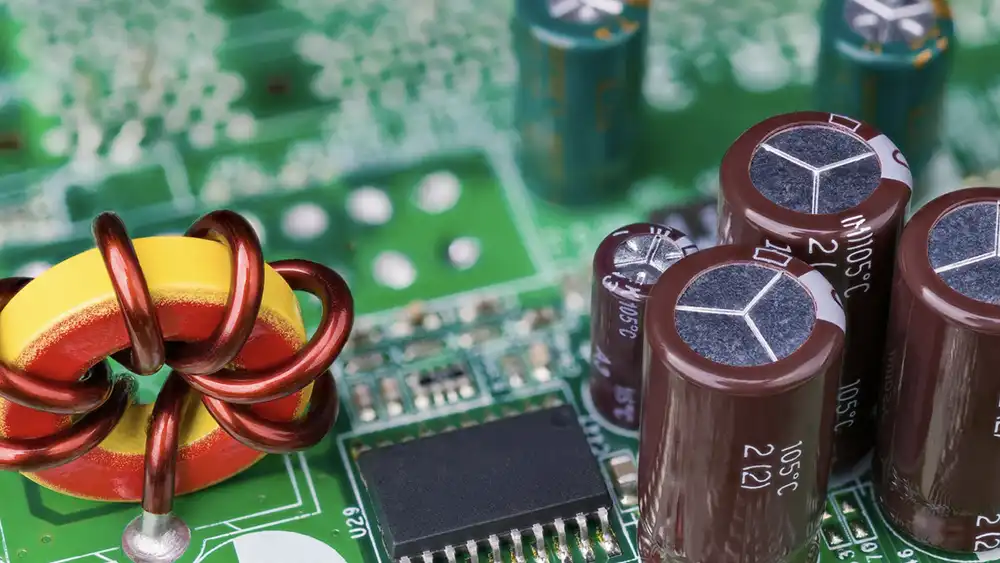
A capacitor is an electronic component that stores electrical energy in an electric field. It consists of two conductive plates separated by an insulating material called a dielectric.
Importance of Capacitors in Electronics
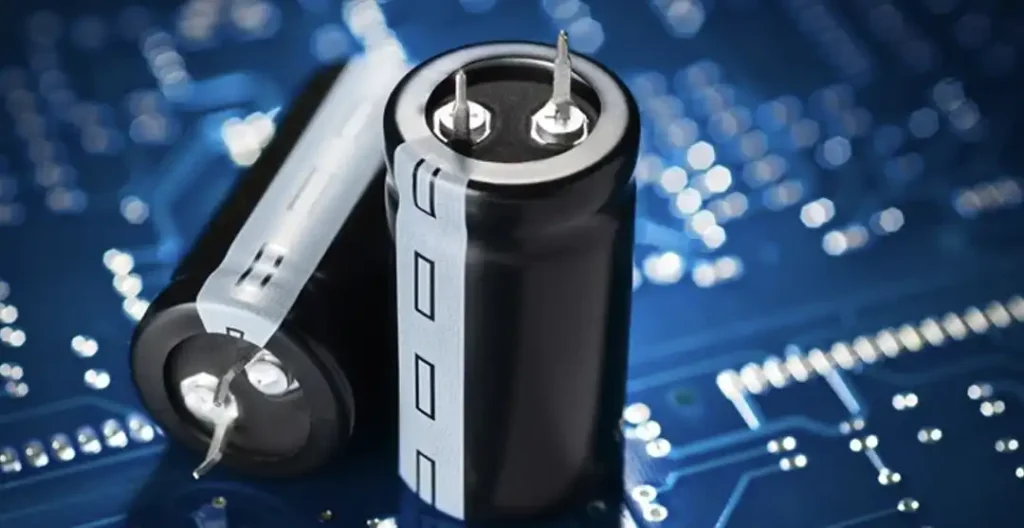
Capacitors are fundamental components in electronics with widespread importance due to their versatile functionality. Here’s a deeper look into their significance:
- Energy Storage: Capacitors store electrical energy in an electric field, enabling them to provide bursts of power when needed. This is vital for smoothing out fluctuations in power supplies, delivering pulses of energy in devices like camera flashes, and maintaining stable voltage levels in circuits.
- Signal Conditioning: Capacitors filter and shape electrical signals, allowing specific frequencies to pass through while blocking others. This is essential in audio systems, radios, and communication devices to remove noise, enhance signal quality, and extract desired information.
- Voltage Regulation: Capacitors help regulate voltage levels in circuits by absorbing or releasing electrical energy as needed. They stabilize voltage supplies, prevent voltage spikes or drops, and protect sensitive components from damage caused by irregular voltages.
- Timing and Oscillation: Capacitors, in conjunction with resistors, control the timing and frequency of oscillators and timers in electronic devices. This enables precise timing functions, such as in clocks, timers, and frequency generators, crucial for synchronization and coordination.
- Motor Starters and Power Factor Correction: Capacitors aid in starting and running electric motors by providing the initial torque needed for startup and improving motor efficiency through power factor correction. This is common in appliances like air conditioners, refrigerators, and industrial machinery.
- Coupling and Decoupling: Capacitors couple AC signals between different stages of amplifiers while blocking DC components. They also decouple AC signals from DC power supplies, isolating stages of circuits and reducing interference.
- Tuned Circuits: Capacitors, in conjunction with inductors, form tuned circuits used in radio frequency (RF) communication systems, antennas, and wireless devices. They resonate at specific frequencies, allowing for selective frequency filtering and tuning.
- Energy Efficiency: Capacitors contribute to energy efficiency in electronic devices by improving power factor, reducing losses in electrical systems, and optimizing the utilization of electrical energy.
What Does a Capacitor Do
A capacitor is an essential component in electronics that stores electrical energy in an electric field. Its primary function is to regulate voltage levels, filter out noise, and provide backup power during fluctuations in electrical systems.
Essentially, capacitors help maintain the stability and efficiency of electronic devices by storing and releasing energy as needed.
What Does a Capacitor Do in a Circuit?
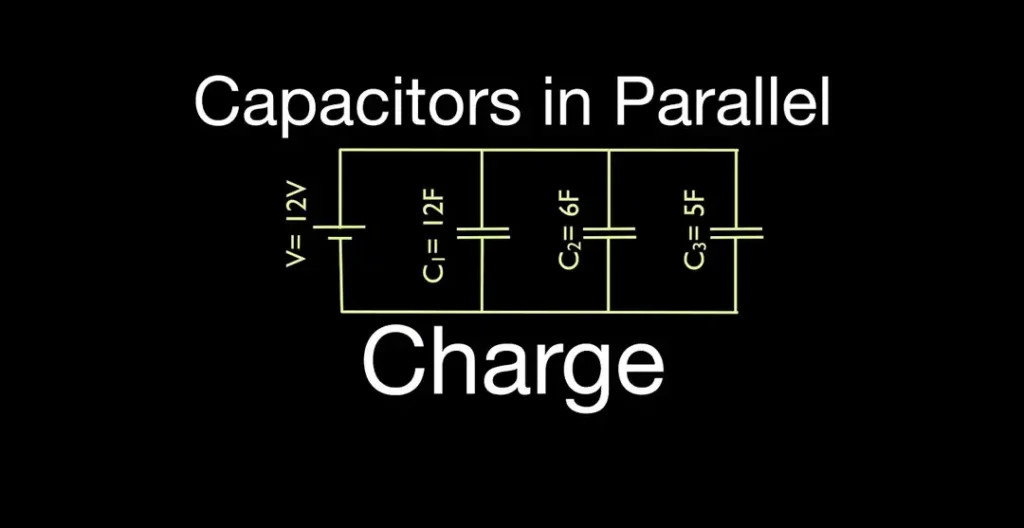
In a circuit, a capacitor serves several important functions:
Energy Storage: One of the primary functions of a capacitor is to store electrical energy in an electric field between its plates. When a voltage is applied across the capacitor, electrons accumulate on one plate, creating a negative charge, while the other plate becomes positively charged. This stored energy can be released when needed, providing a temporary source of power or helping to stabilize voltage levels in the circuit.
Filtering: Capacitors are often used in circuits to filter out certain frequencies of electrical signals. By selectively allowing certain frequencies to pass through while blocking others, capacitors can be used to remove unwanted noise or ripple from power supplies, audio signals, or data transmission lines, resulting in cleaner and more reliable signals.
Coupling and Decoupling: Capacitors can couple or decouple signals between different parts of a circuit. They allow AC (alternating current) signals to pass through while blocking DC (direct current), enabling the coupling of different stages of amplifiers without affecting the DC bias. Capacitors also act as decoupling elements by providing a low-impedance path for high-frequency signals to ground, reducing noise and interference in the circuit.
Timing: Capacitors, in combination with resistors, can be used to create timing circuits. The charging and discharging of a capacitor through a resistor determine the time constant of the circuit, which can be used to generate precise time delays or control the frequency of oscillators in applications such as timers, pulse generators, and clock circuits.
Voltage Regulation: Capacitors are often employed in voltage regulation circuits to stabilize voltage levels and reduce voltage fluctuations. By storing and releasing electrical energy as needed, capacitors help to smooth out variations in voltage, ensuring a more consistent and reliable power supply to sensitive electronic components.
What Does the Capacitor Do on an AC Unit
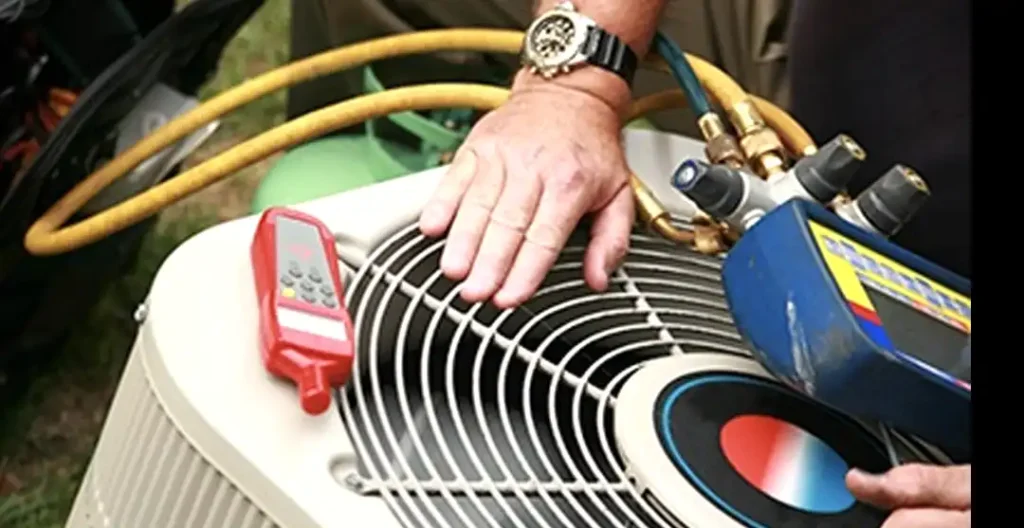
In an air conditioning (AC) unit, capacitors play a crucial role in the operation of the compressor and the fan motor. Specifically, AC units typically have two types of capacitors:
- Start Capacitor: The start capacitor is used to provide an initial boost of power to the compressor motor when the AC unit is turned on. The compressor motor requires a high starting torque to overcome inertia and begin the compression process. The start capacitor temporarily stores electrical energy and releases it to the compressor motor, helping it to start up quickly and efficiently.
- Run Capacitor: The run capacitor is used to maintain a steady voltage supply to the compressor motor and the fan motor during normal operation of the AC unit. It helps to improve the efficiency and performance of the motors by providing a phase shift between the motor’s start and run windings, which creates a rotating magnetic field necessary for smooth operation.
Capacitors in an AC unit are essential for starting and running the compressor and fan motors efficiently. They provide the necessary electrical energy and voltage regulation to ensure proper operation of the unit, contributing to its cooling capacity and overall performance.
If a capacitor in an AC unit fails, it can lead to motor starting problems, reduced cooling efficiency, or even damage to the motors, highlighting the importance of regular maintenance and timely replacement of faulty capacitors.
What Does a Capacitor Do for Subs
In the context of car audio systems, particularly subwoofers (subs), capacitors serve a specific purpose:
- Voltage Stabilization: Subwoofers draw a significant amount of power from the car’s electrical system, especially during bass-heavy passages in music. This sudden demand for power can cause voltage drops in the electrical system, leading to dimming lights, reduced amplifier performance, and potential strain on the car’s alternator. Capacitors are often used to mitigate these voltage fluctuations by temporarily storing electrical energy and releasing it quickly when needed. This helps to stabilize the voltage supply to the amplifier and subwoofers, ensuring consistent performance without causing strain on the electrical system.
Capacitors for subs help to stabilize the voltage supply to the amplifier and subwoofers in car audio systems, preventing voltage drops and ensuring optimal performance during demanding bass passages.
What Does a Capacitor Do for a Subwoofer
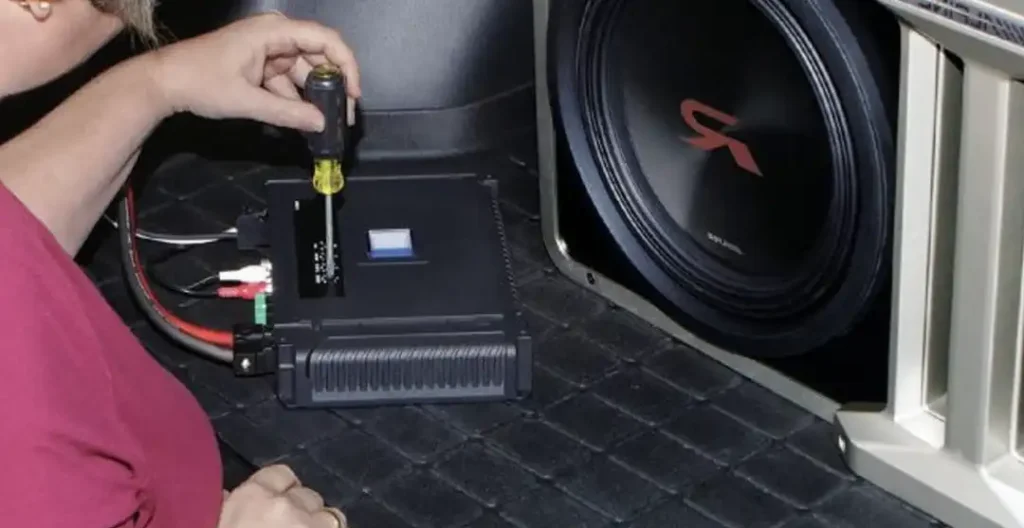
In a car audio system, a subwoofer capacitor primarily addresses issues related to power supply stability and voltage fluctuations.
Here’s how:
- Voltage Regulation: Subwoofers require a considerable amount of power to produce low-frequency sounds effectively. During heavy bass passages, the demand for power can cause voltage drops in the electrical system of the vehicle. A capacitor installed near the amplifier or subwoofer helps to stabilize the voltage supply by storing electrical energy and releasing it rapidly when needed. This prevents voltage fluctuations that can affect the performance of the amplifier and subwoofer.
- Preventing Amplifier Damage: Sudden drops in voltage can strain the amplifier powering the subwoofer, potentially leading to overheating or even damage. By providing a buffer of stored energy, the capacitor helps to ensure that the amplifier receives a steady supply of power, reducing the risk of damage and ensuring consistent performance.
- Diminished Headlight Dimming: When the subwoofer draws a large amount of power from the car’s electrical system, it can cause headlights and other accessories to dim temporarily. Installing a capacitor can alleviate this issue by stabilizing the voltage supply, reducing or eliminating the dimming effect.
What Does a Furnace Capacitor Do?
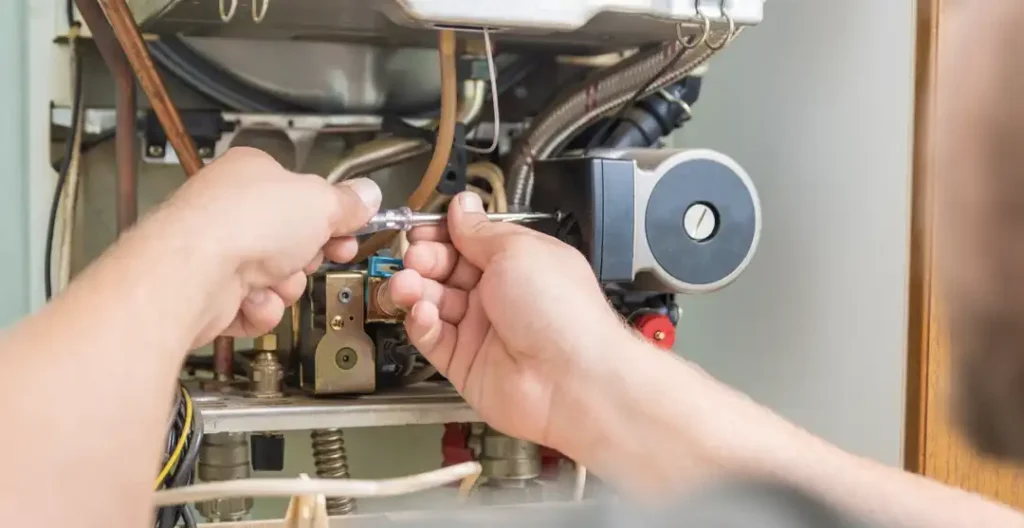
In a furnace system, a capacitor serves an essential role in powering the blower motor. Specifically, the furnace capacitor helps the motor start by providing an initial burst of electrical energy when the furnace is turned on. This kickstarts the motor’s rotation, allowing it to begin circulating air through the heating system.
Additionally, the capacitor assists in maintaining a stable voltage supply to the blower motor during its operation. By ensuring consistent voltage levels, the capacitor helps the motor run smoothly and efficiently, without fluctuations that could lead to performance issues or motor failure.
What Does a Starter Capacitor Do?
A starter capacitor, also known as a start capacitor, plays a critical role in the operation of single-phase electric motors, particularly in devices like air conditioners, refrigerators, and compressors. Its main function is to provide an initial boost of electrical energy to the motor during startup.
When the motor is turned on, the starter capacitor temporarily stores electrical charge and then releases it to the motor’s winding. This surge of energy creates the necessary torque to overcome the motor’s initial inertia and initiate rotation. Once the motor reaches a certain speed, a centrifugal switch or other mechanism disconnects the starter capacitor from the circuit.
In essence, the starter capacitor helps the motor overcome the resistance to starting, ensuring that it starts up quickly and efficiently. Without the starter capacitor, single-phase motors may struggle to start or may require significantly more power to overcome the initial resistance, which can lead to overheating and premature wear of motor components.
What Does Run Capacitor Do?
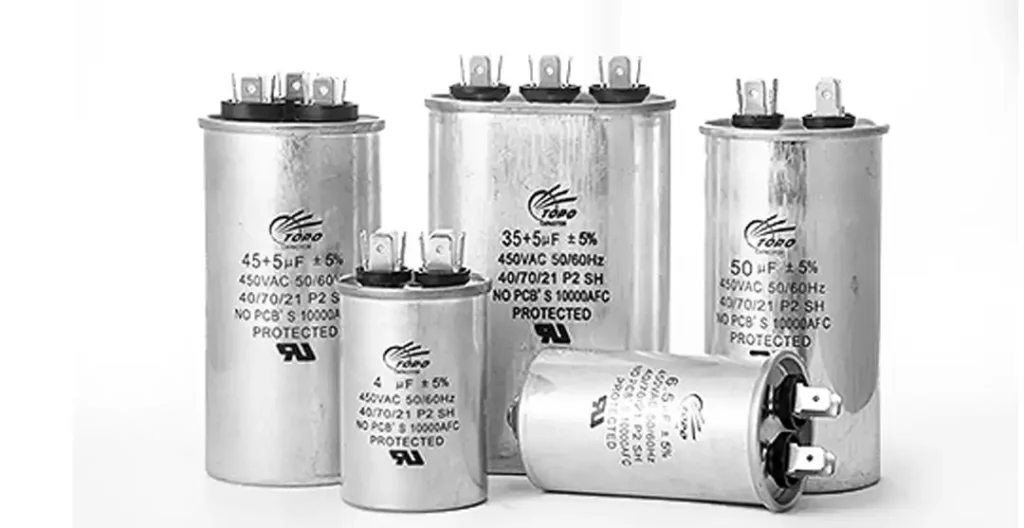
A run capacitor is a type of capacitor commonly used in single-phase electric motors, such as those found in HVAC systems, compressors, and fans. Its primary function is to assist in the continuous operation of the motor by improving its efficiency and power factor.
Here’s what a run capacitor does:
- Phase Shift: A run capacitor creates a phase shift between the motor’s start and run windings. This phase shift helps to create a rotating magnetic field within the motor, which is necessary for smooth and efficient operation. By adjusting the phase relationship between the voltage and current in the motor windings, the run capacitor ensures that the motor operates optimally.
- Power Factor Correction: Run capacitors also contribute to power factor correction in electric motors. Power factor is a measure of how effectively electrical power is being converted into useful work. By adjusting the phase angle between voltage and current, the run capacitor helps to improve the power factor of the motor, reducing energy losses and improving overall efficiency.
- Stabilizing Voltage: Run capacitors help to stabilize the voltage supply to the motor during operation. By providing a buffer of stored electrical energy, the capacitor helps to maintain a constant voltage level, even when the motor experiences fluctuations in load or power supply. This ensures consistent performance and reduces the risk of motor damage due to voltage spikes or drops.
How Does a Capacitor Work?
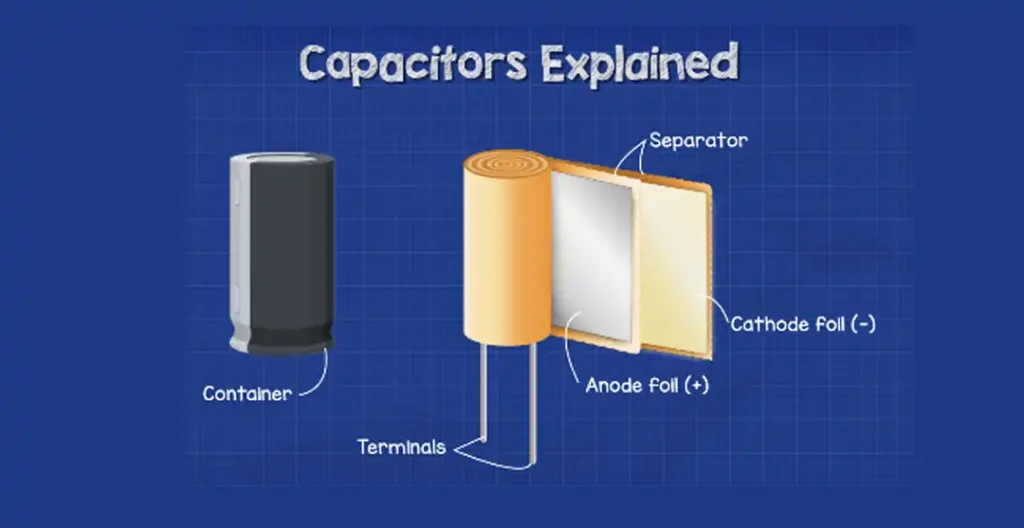
A capacitor is an electronic component that stores electrical energy in an electric field. It’s made of two conductive plates separated by an insulating material called a dielectric. When a voltage is applied across the plates, electrons accumulate on one plate, creating a negative charge, while the other plate becomes positively charged. This separation of charges creates an electric field between the plates.
The amount of charge a capacitor can store depends on its capacitance, which is determined by factors like the surface area of the plates, the distance between them, and the properties of the dielectric material. Capacitance is measured in farads (F).
Capacitors are commonly used in electronic circuits for various purposes:
- Energy storage: Capacitors can store electrical energy and release it when needed, like in flash cameras or in smoothing out voltage fluctuations in power supplies.
- Filtering: They can filter out certain frequencies of electrical signals, allowing only specific frequencies to pass through, which is useful in audio circuits and radio receivers.
- Coupling: Capacitors can block DC (direct current) while allowing AC (alternating current) to pass through, enabling the coupling of different stages of amplifiers without affecting the DC bias.
- Timing: Capacitors can be used in conjunction with resistors to create timing circuits, such as in oscillators or timers.
What Are the Applications of Capacitors?
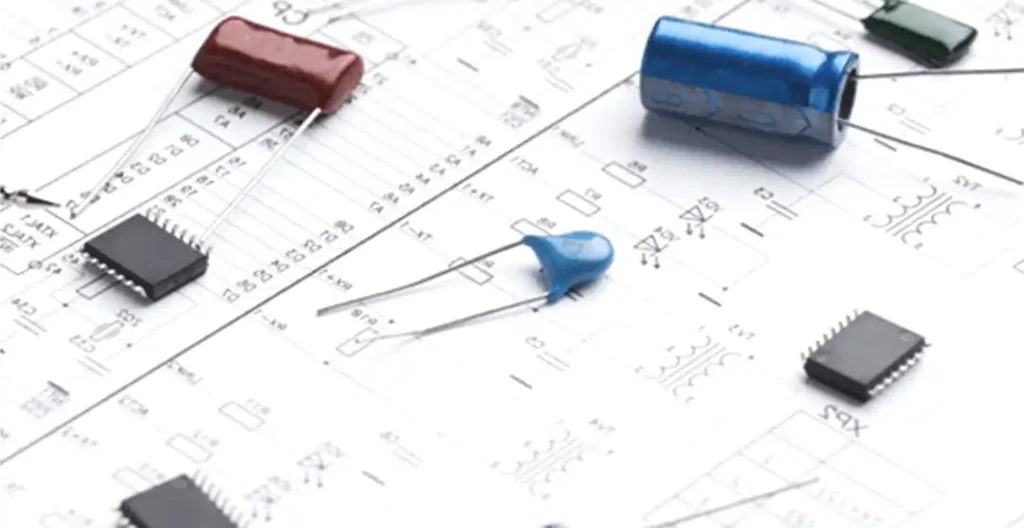
Capacitors find applications in various fields due to their ability to store and release electrical energy. Here are some common applications:
Power Supply Filtering: Capacitors are often used in power supply circuits to smooth out fluctuations in voltage. They store charge when voltage is higher than the desired level and release it when voltage drops below that level, thereby providing a more stable voltage output.
Timing Circuits: Capacitors, in conjunction with resistors, are used to create timing circuits in devices such as oscillators, timers, and pulse generators. The time constant of the circuit determines the timing behavior, which is crucial in applications like blinking LEDs or generating clock signals in digital circuits.
Decoupling and Bypassing: Capacitors are employed to decouple or bypass AC signals from DC power supplies in electronic circuits. They help remove unwanted noise or ripple from the power supply, ensuring a cleaner DC voltage for sensitive components.
Filtering and Signal Processing: Capacitors are used in filters to pass or block certain frequencies of electrical signals. Low-pass, high-pass, band-pass, and band-stop filters utilize capacitors along with resistors to shape the frequency response of circuits. This is essential in audio systems, communication devices, and radio receivers.
Energy Storage: Capacitors can store energy temporarily and release it quickly when needed. They are used in applications where rapid energy discharge is required, such as camera flashes, defibrillators, and electric vehicles.
Motor Starters and Run Capacitors: Capacitors are used in conjunction with single-phase electric motors to provide starting torque and improve efficiency. Start capacitors provide the initial boost to start the motor, while run capacitors help maintain a steady motor operation.
Voltage Regulation: Capacitors are utilized in voltage regulator circuits to stabilize the output voltage and reduce voltage fluctuations. This is important in electronic devices where a stable supply voltage is necessary for proper operation.
Signal Coupling and Blocking: Capacitors are employed to couple AC signals between different stages of amplifiers while blocking DC components. This allows for the amplification of AC signals without affecting the DC bias of the circuit.
Tuned Circuits: Capacitors are used in tuned circuits along with inductors to create resonant circuits. These circuits are employed in radio frequency (RF) communication systems, antennas, and wireless devices for tuning and selective frequency filtering.
What Happens if a Capacitor Fails?
When a capacitor fails, it can lead to various consequences depending on the type of failure and the application context. Here are some common scenarios:
- Short Circuit: One of the most common failures is a short circuit, where the dielectric material between the capacitor plates breaks down, allowing current to flow directly through the capacitor. This can result in excessive current flow, overheating, and potentially damaging other components in the circuit.
- Open Circuit: In this case, the capacitor fails to conduct electricity due to a break in the connection between the plates or a breakdown of the dielectric material. An open-circuit capacitor can disrupt the functioning of the circuit it’s a part of, causing loss of functionality or performance degradation.
- Leakage: Capacitors may develop leakage paths over time, allowing small amounts of current to flow even when they are not supposed to. This can result in a gradual loss of charge, affecting the capacitor’s ability to store energy effectively.
- Exploding or Swelling: In rare cases, particularly with electrolytic capacitors, internal pressure can build up due to factors like overvoltage or overheating, leading to the capacitor exploding or swelling. This poses a safety risk, as the capacitor casing may rupture, releasing harmful chemicals or causing physical damage to nearby components.
- Altered Capacitance: Capacitors may experience a change in capacitance due to factors like aging, temperature fluctuations, or exposure to excessive voltage or current. This can affect the performance of circuits relying on precise capacitance values, leading to deviations from the intended behavior.
- Noise and Interference: A failing capacitor may introduce noise or interference into the circuit, affecting the quality of signals and potentially causing malfunctions in sensitive electronic devices.
- System Malfunction: If a capacitor fails in a critical component or circuit within a system, it can lead to the malfunction or failure of the entire system. This is particularly problematic in applications where capacitors are used for voltage regulation, timing, or energy storage.
Capacitor failures can have detrimental effects on electronic circuits and systems, ranging from minor performance issues to complete system failures or safety hazards. Regular inspection, maintenance, and replacement of capacitors are essential to ensure the reliability and safety of electronic devices and equipment.
How to Test a Capacitor?
Testing a capacitor is crucial to ensure its proper functionality and to diagnose any potential issues in electronic circuits. Here are several methods commonly used to test capacitors:
- Visual Inspection: Start by visually inspecting the capacitor for any signs of physical damage, such as bulging, leaking, or cracks in the casing. Any of these signs could indicate a faulty capacitor that needs to be replaced.
- Capacitance Meter: The most direct method to test a capacitor is to use a capacitance meter. This device measures the capacitance value of the capacitor directly. Disconnect the capacitor from the circuit, discharge it if necessary, and then connect the leads of the capacitor to the capacitance meter. The meter will display the capacitance value, allowing you to compare it to the rated capacitance specified for the capacitor.
- Ohmmeter or Multimeter (Resistance Test): While capacitors are not resistive components, they can sometimes develop a short circuit or become open-circuited. To check for these faults, use an ohmmeter or a multimeter set to the resistance (ohms) mode. Discharge the capacitor, disconnect it from the circuit, and then connect the leads of the meter to the terminals of the capacitor. A very low resistance reading indicates a short-circuited capacitor, while an infinite resistance reading indicates an open-circuited capacitor.
- Voltage Test: Capacitors can fail due to overvoltage conditions, leading to a breakdown of the dielectric material. Use a multimeter to check the voltage across the capacitor terminals while it’s connected to the circuit and under normal operating conditions. If the voltage exceeds the rated voltage of the capacitor, it may lead to failure over time.
- ESR (Equivalent Series Resistance) Test: Electrolytic capacitors, in particular, can degrade over time, leading to an increase in ESR, which affects their performance. Specialized ESR meters are available to measure this parameter directly. Disconnect the capacitor from the circuit and follow the manufacturer’s instructions for testing its ESR.
- In-Circuit Testing: In some cases, capacitors may need to be tested while still connected to the circuit. This can be challenging but can provide valuable information about the capacitor’s performance within the specific circuit context. Oscilloscopes and specialized capacitor analyzers are often used for in-circuit testing.
Remember to exercise caution when testing capacitors, especially when dealing with high-voltage circuits, and always follow appropriate safety procedures to prevent electric shocks or damage to equipment. If a capacitor fails any of these tests or shows signs of physical damage, it should be replaced with a new one of the correct capacitance and voltage rating.
How to Choose the Right Capacitor?
Choosing the right capacitor for a specific application involves considering several key factors to ensure optimal performance and reliability. Here’s a guide on how to choose the right capacitor:
Capacitance Value: Determine the required capacitance value based on the application’s requirements. Capacitance is measured in farads (F), but typically, capacitors have values ranging from picofarads (pF) to farads (F). Choose a capacitor with a capacitance value that meets or exceeds the required value for proper circuit operation.
Voltage Rating: Select a capacitor with a voltage rating that exceeds the maximum voltage expected in the circuit. Operating a capacitor above its rated voltage can lead to failure or reduced lifespan. It’s generally recommended to choose a capacitor with a voltage rating at least 20% higher than the maximum voltage in the circuit.
Temperature Rating: Consider the temperature conditions in which the capacitor will operate. Capacitors have temperature ratings that indicate the maximum temperature at which they can safely operate without degradation. Choose a capacitor with a temperature rating suitable for the application environment to ensure reliability and longevity.
Tolerance: Capacitors have a tolerance rating that specifies the allowable deviation from the stated capacitance value. For critical applications where precise capacitance is required, choose a capacitor with a low tolerance rating (e.g., ±5% or ±1%). In less critical applications, a higher tolerance rating may be acceptable.
Dielectric Material: Different types of capacitors use various dielectric materials, each with its own characteristics and suitability for specific applications. Common dielectric materials include ceramic, electrolytic, film, and tantalum. Consider factors such as dielectric constant, temperature stability, and frequency response when selecting the appropriate dielectric material for the application.
Size and Package: Capacitors come in various sizes and package types, ranging from surface-mount components to through-hole capacitors. Choose a capacitor size and package type that fits the available space on the circuit board and is compatible with the assembly process.
Lifetime Expectancy: For applications requiring long-term reliability, consider the expected lifetime of the capacitor. Electrolytic capacitors, for example, have a limited lifespan due to their electrolyte degradation over time, while ceramic and film capacitors offer higher reliability and longer lifespans.
Specialized Features: Some applications may require capacitors with specialized features, such as low ESR (Equivalent Series Resistance), high ripple current handling capability, or self-healing properties. Select capacitors with these features to meet the specific requirements of the application.
Capacitor FAQs
What is the lifespan of a capacitor?
The lifespan of a capacitor varies depending on factors like operating conditions and quality, with typical lifespans ranging from several thousand to tens of thousands of hours.
Can a capacitor store energy?
Yes, capacitors store electrical energy in their electric fields when charged, releasing it when needed.
How do capacitors affect circuit performance?
Capacitors influence circuit performance by filtering out noise, stabilizing voltage, and facilitating signal coupling, thus enhancing overall efficiency and reliability.
Can a capacitor explode?
Under certain conditions such as overvoltage or physical damage, capacitors can fail catastrophically, leading to rupture or explosion.
How do I discharge a capacitor safely?
To discharge a capacitor safely, short-circuit its terminals with a resistor or insulated tool to dissipate stored energy gradually.
Can a bad capacitor cause a fire?
Faulty capacitors can pose fire hazards if subjected to extreme conditions or if their insulation fails, leading to short circuits and overheating.
Conclusion
In the intricate tapestry of electronics, capacitors emerge as indispensable components, silently enabling the seamless operation of countless devices. From smoothing voltage fluctuations to storing energy, their versatility knows no bounds. Understanding the role and importance of capacitors empowers electronics enthusiasts and professionals alike to harness their potential for innovation and reliability.




















